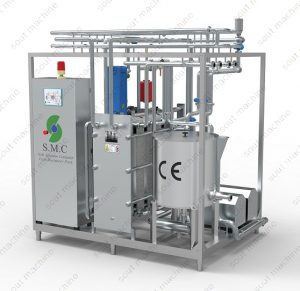Pasteurization of cheese milk
Pasteurization of cheese milk is usually achieved using a plate heat exchanger, whereby the incoming cold milk is heated to 162°F or 72°c and held for 15 seconds, before regenerative cooling to the cheese vat fill temperature. In order to minimize the risk of failure in the pasteurization process the heat exchanger is fitted with an automatic control system for ensuring the milk is heated to pasteurization temperature and held for the required time, and a pressure differential system to prevent contamination of pasteurized milk with raw milk in the regeneration section of the plate heat exchanger.
Milk intended for types of cheese which require more than one month for ripening does not necessarily need to be pasteurized, but common practice and legislation generally require this step to be included anyway. Milk intended for un-ripened or fresh cheese must be pasteurized.

